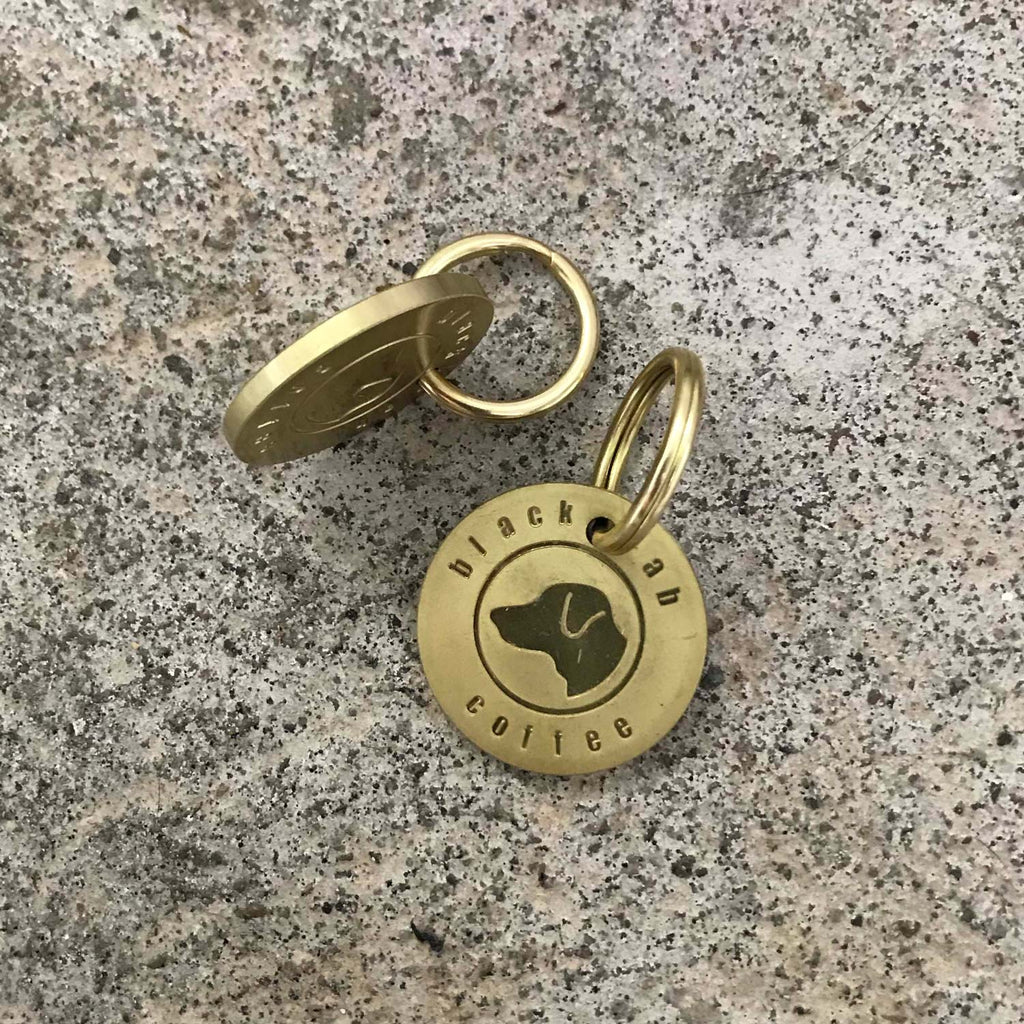Remember when you first got your dog? The excitement of welcoming a new furry friend to your family? If you’re anything like me, before your new dog even set foot in the house, you realize that you are willing to do anything for these four-legged companions to make their lives sweeter and their experiences richer. Taking your dog to a vet to have them checked regularly, giving them the best food (even if your wallet doesn’t agree) and walking them regularly is just the basics.
When it comes to accessorising our dogs, agonising over finding the perfect lead, collar, dog bed, water and food bowl is normal behavior for us humans. Usually on the way out of the pet shop you realise your dog needs a name tag, what we don't consider is this is the most important accessory your dog can have and is often an afterthought or worse a forgotten accessory.
Consider the purpose of your dog name tag before you buy
When it comes to buying a dog tag we usually consider the shape, size, colour and of course the engraving the dog’s name and a phone number. Now let’s stop for a moment and think what’s the purpose of a dog tag, to identify the dog and have them returned to the owners, granted most tags tick this box however what we don’t consider is longevity of these tags. A dog’s name tag is useless if it can’t be read or it breaks lose.

Metal marking techniques, some are better than others
When you buy a dog tag the name is either engraved, chemically etched or hand stamped, but what’s the difference and which is better? Each of these methods has it pros and cons.
Engraving by hand is a cutting process that cuts into the metal or the metals coating. It is usually long lasting however the process is limited by the engravers hand being able to fit all the details on a small surface like a dog name tag.
Engraving by laser all depends on the strength of the laser, unless the laser is very strong then you will find that most laser engraving only engraves into the anodized coating of metal not the metal due to the cost prohibited nature of strong lasers. The downside of poor-quality laser engraving is that the engraving is only the depth of the metal coating which wears over time. On the plus side the process is computerized which allows for a lot of information to be clearly engraved onto the small dog tag surface.
Laser etching is the process where by a chemical bond is formed between a laser marking spray and the metal. The downside of this technique is that it will wear off if it’s consistently rubbed and some oils can actually remove the bonded laser marking spray from the metal. Once again because the process is computerised a lot of information can clearly fit onto the dog tag.

Laser marking spray forms a chemical bond to metal. A great solution for plaques and trophies but not ideal for a dog tag that is constantly being rubbed and coated in oils from dogs and the environment
Hand stamping is the process of hammering letter impressions into metal, the result is a clear deep impression that will last the life of the tag. The downside of this process is that it’s limited by the dexterity of the hand stamper and therefore limits the amount of information that can be put on a tag.

Just how durable is your dog tag
Dog name tags are most often connected to the dog’s collar via a split ring. The strength of this connection depends upon the size of the metal cross section holding the ring. Majority of tags are of a 1mm thickness with a hole offset 1mm from the edge, better quality tags are thicker and the hole is offset further from the edge. If the hole in the dog tag is 50% further from the edge and the thickness of the metal is 50% thicker then the strength of the connection is 50% stronger because there is more metal for the split ring to pull on.

Know what metal your dog name tag is made of
Anodized aluminum is the most commonly used material for dog tags. Anodizing is an electrochemical process that converts the metal surface into a decorative, durable, corrosion-resistant, anodic oxide finish. This process is great for coating window and door frames however for use as a dog tag the coating wears and scratches no matter how much you clean it the loss of coating is gone forever and can never be restored and usually starts to deteriorate after the first year.
Better alternatives are solid metals like brass or copper, these metals are susceptible to a chemical reaction triggered by air or moisture, the brilliant gold coloration is prone to tarnish. Even though these metals appear to be worn they only need a little attention to be easily be restored. There are many great metal cleaning products that you can buy off the shelf, however If you’d rather not buy a cleaner just a Do-It-Yourself cleaner is a great option too! the following products do a great job also:
- Lemon and Salt: Cut a lemon in half and remove the seeds, add salt to the cut edge of the lemon. If you don't have any salt, you can substitute with baking powder. Rub the metal name tag with your finger. After rinsing dry with a clean cloth.
- Ketchup: Using a damp cloth, add a drop of ketchup. Rub the ketchup over the brass and let it sit for a few minutes, rinse and dry with a clean cloth.
Next time you consider buying a dog tag, remember the importance of buying something that is going to keep them safe for a lifetime not just for the next couple of years.


Leave a comment: